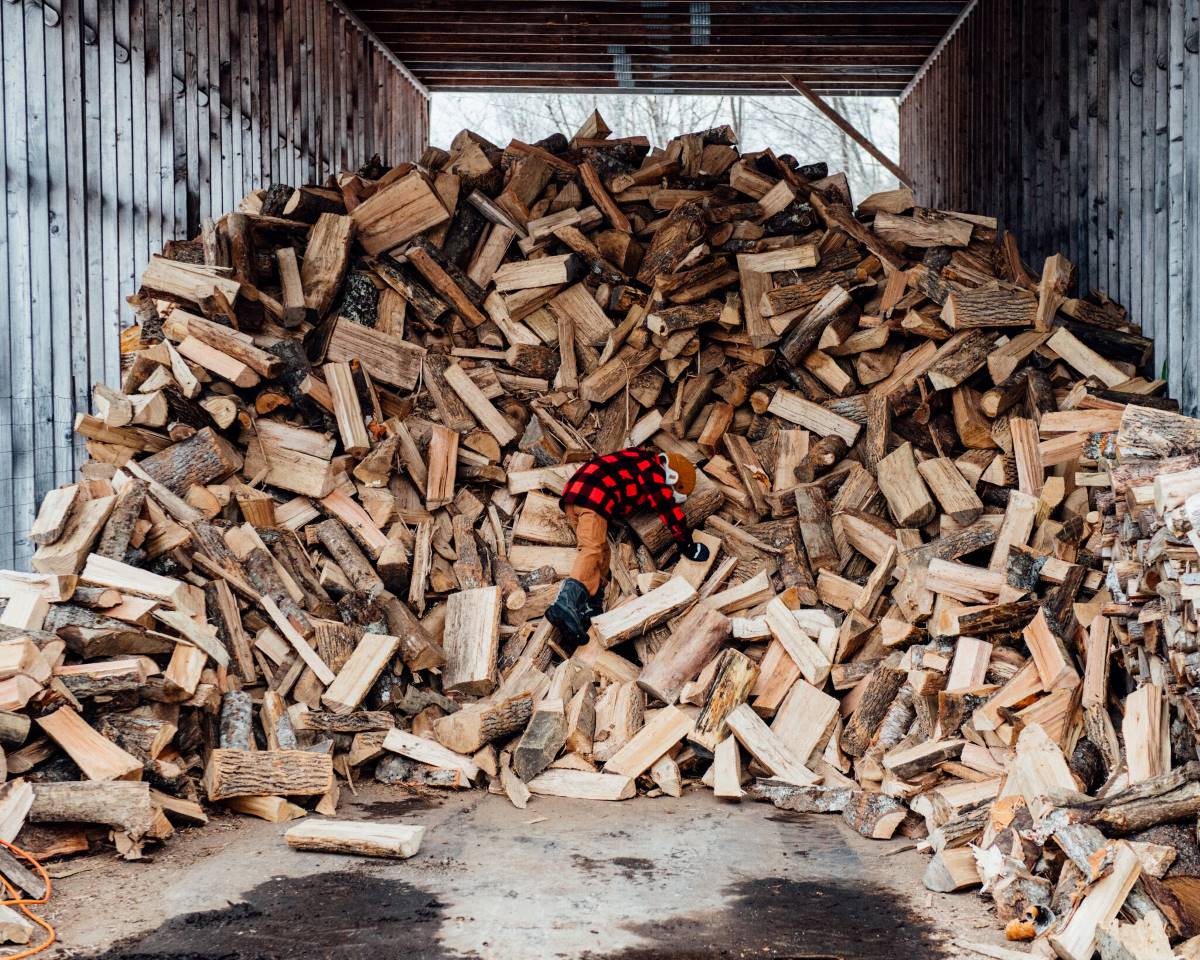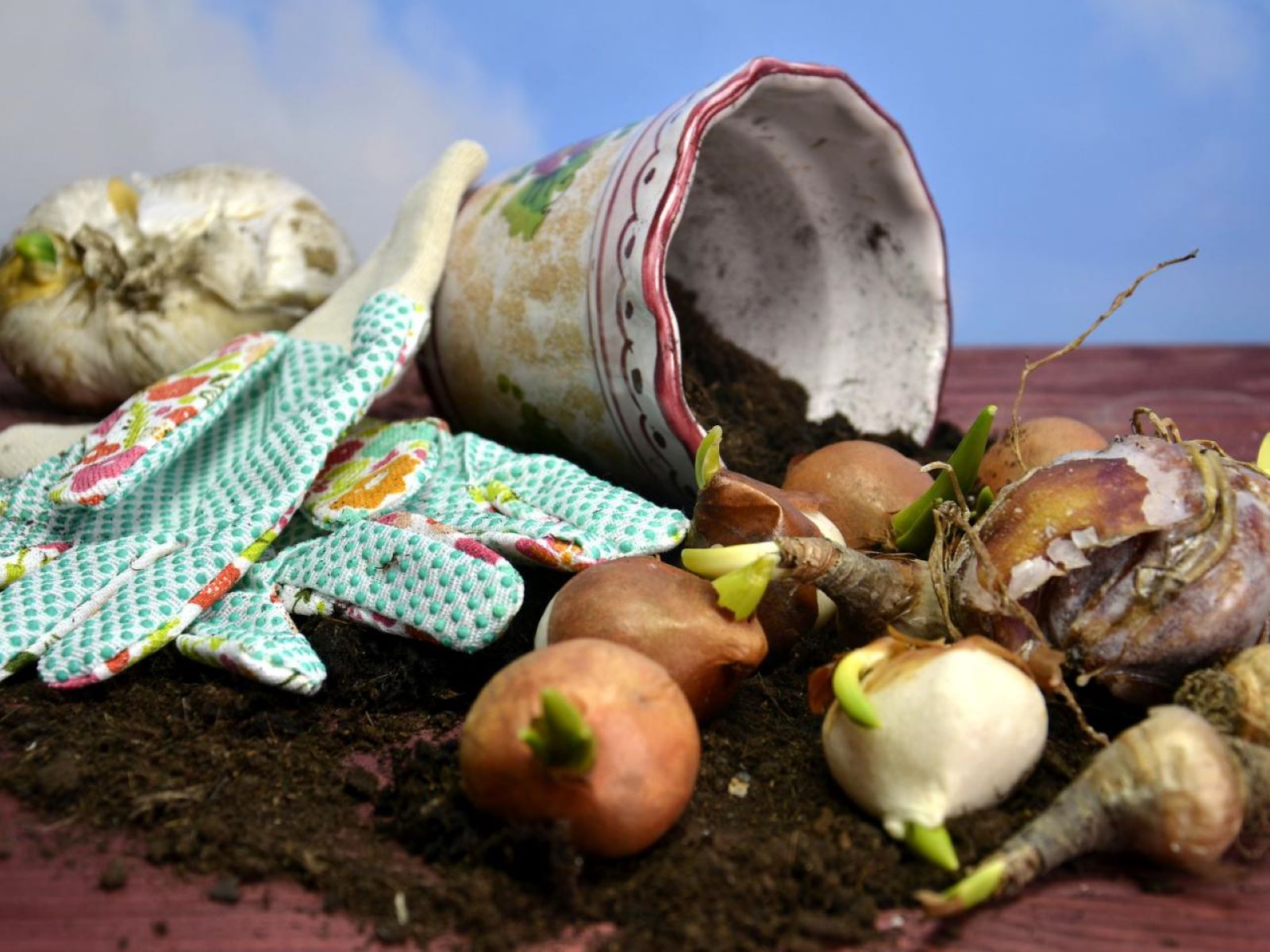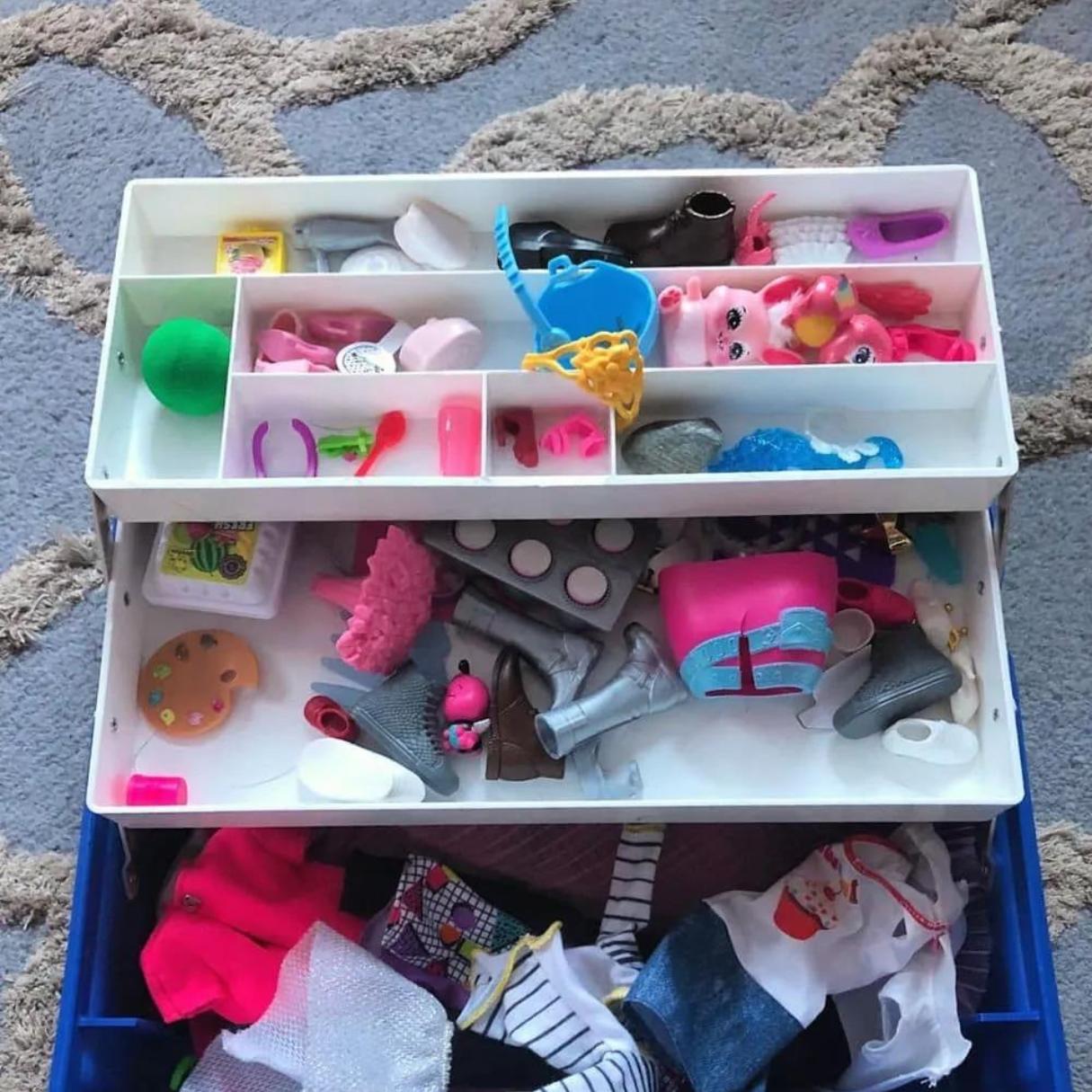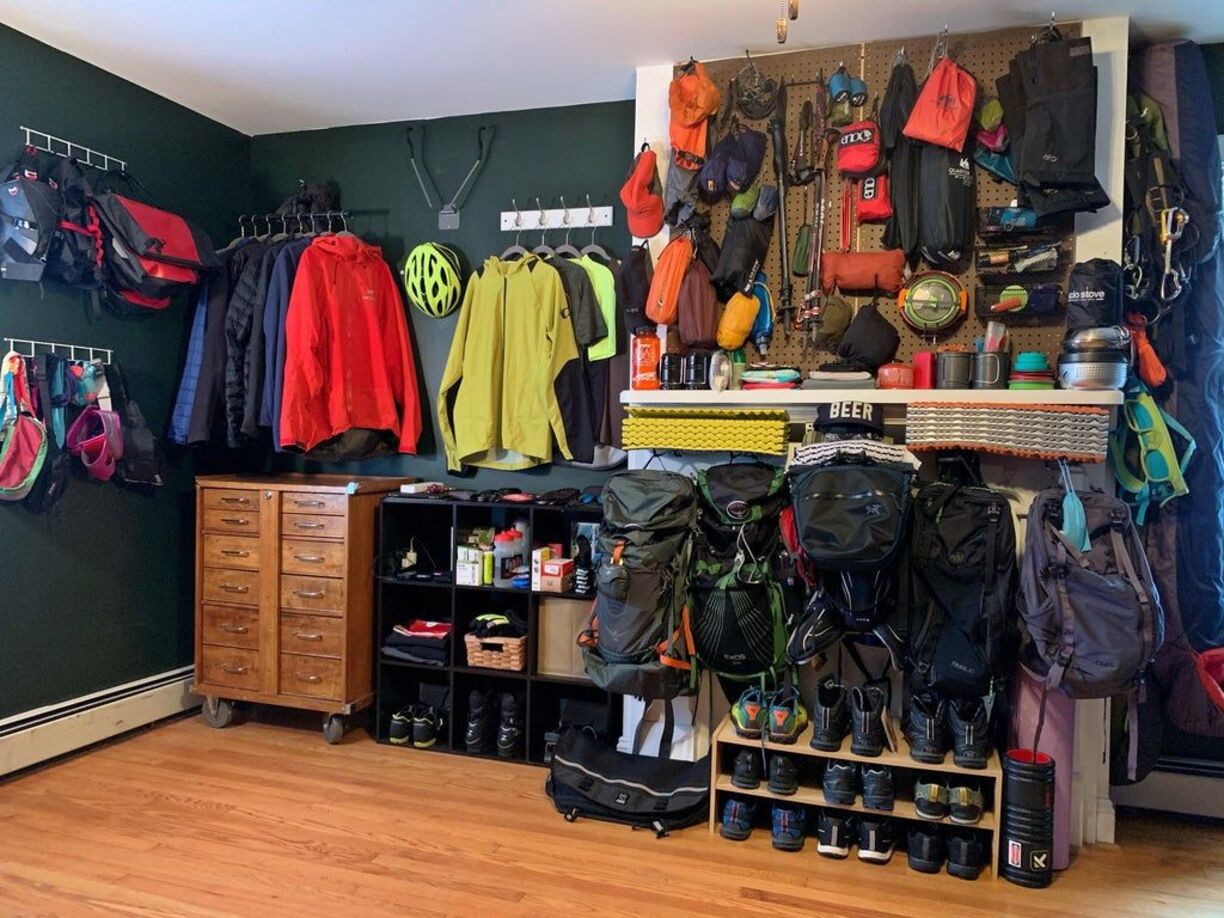

Articles
How To Store Summer Clothes
Modified: December 7, 2023
Learn effective ways to store your summer clothes in this informative article. Keep your wardrobe organized and protected for the next season.
(Many of the links in this article redirect to a specific reviewed product. Your purchase of these products through affiliate links helps to generate commission for Storables.com, at no extra cost. Learn more)
Introduction
Welcome to the guide on how to store your summer clothes! As the seasons change, it’s time to bid goodbye to shorts, sundresses, and tank tops, and prepare them for storage until next year. Properly storing your summer clothes not only helps preserve their quality but also allows for easy accessibility when warmer weather returns.
In this article, we will provide you with a comprehensive guide on how to store your summer clothes to keep them in pristine condition. From sorting and grouping to cleaning and laundering, folding and storing to protecting from moisture and pests, we’ll cover all the essential steps to ensure your clothes stay fresh and ready-to-wear when summer rolls around again.
So, let’s dive in and learn how to store your summer clothes effectively!
Key Takeaways:
- Properly storing summer clothes involves sorting, cleaning, and using appropriate storage methods like vacuum-sealed bags or plastic bins. Protecting clothes from moisture and pests is crucial for long-term preservation.
- Regularly revisiting and refreshing stored summer clothes helps maintain their quality and readiness for the next season. Proper care, including cleaning and proper storage, is essential for extending the lifespan of your favorite summer outfits.
Read more: How To Store Winter Coats In Summer
Sorting and Grouping
The first step in storing your summer clothes is to sort and group them based on various factors. This process not only helps you stay organized but also makes it easier to locate specific items when you need them. Here’s how you can sort and group your summer clothes:
- Seasonality: Separate your summer clothes from your winter wardrobe. This will help you identify which items to store and which ones to keep accessible for the current season.
- Category: Divide your summer clothes into different categories such as tops, bottoms, dresses, swimwear, and accessories. This makes it easier to find specific items later.
- Material: Group your clothes based on the material they’re made of. This is particularly important because different materials require different storage methods and conditions.
- Frequency of Use: If you have certain summer clothes that you wear more often than others, keep them separate for easy access.
By sorting and grouping your summer clothes, you’ll have a clear understanding of what needs to be stored and how to organize them effectively.
Cleaning and Laundering
Before storing your summer clothes, it’s crucial to ensure they are properly cleaned and laundered. Even if your clothes appear clean, it’s always a good idea to give them a thorough cleaning before storage to remove any dirt, stains, or odors that may attract pests or cause damage over time. Here’s how you can clean and launder your summer clothes:
- Read the labels: Check the care instructions on each garment to determine the appropriate cleaning method.
- Pre-treat stains: If you notice any stains, treat them with a stain remover or a mild detergent before laundering.
- Choose the right detergent: Use a gentle detergent that is suitable for the fabric of your clothes. Avoid using bleach or harsh chemicals that can weaken the fabric.
- Separate colors: Sort your clothes into light and dark colors to prevent color transfer during the washing process.
- Use cold water: Wash your summer clothes in cold water to prevent shrinking and minimize color fading.
- Gentle cycle: Opt for a gentle or delicate cycle on your washing machine to minimize wear and tear.
- Air dry: Whenever possible, air dry your clothes instead of using a dryer. This helps preserve the fabric and maintain its shape.
By following these cleaning and laundering tips, you ensure that your summer clothes are fresh and ready for storage. Remember, storing dirty or soiled clothes can lead to unpleasant odors and damage over time.
Folding and Storing
Once your summer clothes are clean and dry, it’s time to fold and store them properly. Proper folding techniques help minimize wrinkles and save space, while appropriate storage methods ensure that your clothes remain in good condition. Here’s how to fold and store your summer clothes:
- Fold clothes neatly: Fold your clothes neatly to minimize wrinkles. For t-shirts and lightweight tops, fold them in half horizontally, then fold them in half vertically. For pants and shorts, fold them in half lengthwise, and then fold them in half once more.
- Use acid-free tissue paper: Place a sheet of acid-free tissue paper between each folded item to prevent color transfer and protect delicate fabrics.
- Invest in drawer dividers: If you’re storing your clothes in a dresser or drawer, use drawer dividers to keep different items separated and organized.
- Stack clothes vertically: To save space and make it easier to see your clothes, stack them vertically, rather than horizontally.
- Utilize shelf dividers: If you’re storing clothes on shelves, use shelf dividers to keep different stacks of clothes separate and prevent them from toppling over.
When it comes to storing your folded summer clothes, you have a few options:
- Clear plastic bins: Use clear plastic bins with lids to store your folded clothes. These bins provide protection from dust and insects while allowing you to easily see the contents.
- Vacuum-sealed bags: For those looking to save even more space, vacuum-sealed bags are a great option. These bags compress your clothes, reducing their volume significantly.
- Hanging garment bags: If you have delicate or formal summer clothes, consider using hanging garment bags to protect them from dust and maintain their shape.
Choose the storage method that works best for you and your available space. Whichever option you choose, make sure to label the bins or bags for easy identification when you need to retrieve your summer clothes next year.
Using Vacuum-sealed Bags
When it comes to maximizing storage space and protecting your summer clothes from dust, moisture, and pests, vacuum-sealed bags are a game-changer. These bags work by removing the air from your clothes, compressing them and reducing their volume significantly. Here’s how to effectively use vacuum-sealed bags:
- Sort and group: Before placing your clothes in the bags, sort and group them based on category, size, or material. This will help you locate specific items later without having to open multiple bags.
- Fold clothes: Fold your clothes neatly using the folding techniques mentioned earlier. This ensures that the clothes fit properly in the bag and are not excessively wrinkled.
- Fill the bags: Place your folded clothes into the vacuum-sealed bag, being mindful not to overstuff it. You want to maintain the integrity of the clothes and allow for proper sealing.
- Seal the bag: Once your clothes are in the bag, seal it tightly according to the manufacturer’s instructions. Most vacuum-sealed bags require the use of a vacuum cleaner or a handheld pump to remove the air.
- Store in a cool, dry place: After sealing the bag, store it in a cool, dry place away from direct sunlight and extreme temperatures. This helps protect your clothes from damage and discoloration.
Using vacuum-sealed bags not only saves space but also provides an extra layer of protection for your summer clothes. The airtight seal prevents moisture, odors, and pests from affecting your clothing, ensuring they stay in excellent condition throughout their time in storage.
However, it’s important to note that certain delicate fabrics, such as silk or leather, may not be suitable for vacuum-sealed bags. These materials may require more breathable storage options to prevent damage or discoloration.
By utilizing vacuum-sealed bags, you can effectively store your summer clothes while maximizing your storage space and ensuring their long-term preservation.
Read more: How To Store Chocolate In Summer
Hanging and Covering
While folding and storing clothes in bins or vacuum-sealed bags is a common method, some summer clothes are better suited for hanging to maintain their shape and prevent wrinkles. Here are some tips for hanging and covering your summer clothes:
- Choose the right hangers: Use sturdy and appropriately-sized hangers to support the weight of your clothes without causing stretching or deformation.
- Hang by category: Hang similar items together, such as dresses, blouses, or trousers. This makes it easier to locate specific garments when needed.
- Invest in garment covers: If you have delicate or special occasion summer clothes, consider using garment covers to protect them from dust and potential damage.
- Use padding: For garments with delicate fabrics or embellishments, place padding or tissue paper on the hanger to provide extra support and prevent indentations.
- Avoid plastic covers: While it may be tempting to use plastic covers or bags, they can trap moisture and lead to mildew or musty odors. Opt for breathable fabric covers instead.
- Keep them accessible: Store your hanging clothes in an area where they are easily accessible. This will make it convenient to grab them when the warm weather returns.
By hanging and covering your summer clothes, you can preserve their shape, prevent wrinkles, and keep them in ready-to-wear condition. This method works well for items like dresses, blouses, and trousers that are prone to wrinkling when folded.
Remember to periodically check on your hanging clothes to ensure that they remain in good condition. If you notice any signs of damage or pests, take appropriate measures to address the issue promptly.
By implementing these hanging and covering techniques, you can keep your summer clothes looking their best and extend their lifespan.
Store summer clothes in a cool, dry place away from direct sunlight to prevent fading and damage. Use breathable storage containers or garment bags to protect from dust and pests.
Protection from Moisture and Pests
When storing your summer clothes, it’s important to protect them from moisture and pests. Moisture can lead to mold, mildew, and musty odors, while pests such as moths, silverfish, and beetles can cause damage to fabrics. Here are some effective ways to safeguard your clothes:
- Ensure dryness: Before storing your clothes, ensure they are completely dry. Moisture can cause mold and mildew to develop, leading to irreversible damage.
- Use moisture absorbers: Place moisture absorbers, such as silica gel packets or moisture-absorbing crystals, in your storage containers or bags. These help to absorb any excess moisture and maintain a dry environment.
- Avoid storing in damp areas: Choose a storage location that is dry and free from humidity. Avoid storing clothes in basements or attics where moisture levels are high.
- Use natural moth repellents: Instead of using mothballs that contain harsh chemicals, opt for natural alternatives such as cedar chips, lavender sachets, or dried citrus peel. These natural repellents help keep moths and other pests at bay.
- Regularly air out stored clothes: Periodically open and air out your storage containers or bags. This helps to prevent any stagnant odors and allows for fresh air circulation.
- Inspect clothes before storage: Before packing away your summer clothes, inspect them for any signs of pests or damage. If you spot any issues, handle them accordingly before storing the items.
- Avoid using plastic bags: Plastic bags can trap moisture and create a breeding ground for mold and mildew. Opt for breathable storage options such as fabric bags or acid-free tissue paper.
By taking these precautions, you can protect your summer clothes from moisture and pests, ensuring that they remain in excellent condition for the following season.
Regular monitoring and maintenance of your storage area is crucial to promptly address any potential issues. By being proactive, you can enjoy fresh and pest-free clothes when it’s time to unpack them next summer.
Storing in Plastic Bins
Plastic bins are a popular and practical option for storing your summer clothes. They provide protection from dust, moisture, and pests while keeping your garments organized and easily accessible. Here are some tips for storing your summer clothes in plastic bins:
- Choose the right size: Select plastic bins that are appropriate for the amount of clothing you need to store. It’s better to use multiple smaller bins than overcrowding one large bin, as it can lead to excessive wrinkling and difficulty in finding specific items.
- Label the bins: Use labels or clear tape to mark each bin with a description of its contents. This makes it easy to identify what’s inside without having to open multiple bins.
- Opt for clear bins: Clear plastic bins allow you to see the contents without having to open them. This way, you can quickly locate the specific item you’re looking for.
- Line the bins: Consider lining the bottom of the plastic bins with acid-free tissue paper or fabric to provide an extra layer of protection and prevent direct contact between the clothes and the bin.
- Stack carefully: When stacking the bins, place heavier items on the bottom and lighter ones on top to avoid crushing the clothes. Make sure the bins are stable and secure to prevent them from toppling over.
- Keep in a cool, dry place: Store the plastic bins in a cool, dry location away from direct sunlight and extreme temperatures. This helps to maintain the quality of your clothes and prevent any damage.
Storing your summer clothes in plastic bins allows for easy organization and protection against dust, moisture, and pests. With proper labeling and stackability, you can efficiently utilize your storage space while keeping your clothes in excellent condition.
Remember to periodically check on your stored clothes to ensure they remain in good shape. Inspect for any signs of pests or moisture and address any potential issues promptly.
By following these tips, you can safely store your summer clothes in plastic bins, preserving them for the next sunny season.
Choosing the Right Storage Location
When it comes to storing your summer clothes, choosing the right storage location is essential to ensure their longevity and protection. Here are some factors to consider when selecting the optimal storage space:
- Avoid direct sunlight: Sunlight can cause fading and discoloration of fabrics over time. Choose a storage location away from windows or opt for opaque bins or garment bags to shield your clothes from harmful UV rays.
- Maintain consistent temperature: Fluctuating temperatures can lead to moisture buildup and damage your clothes. Choose a storage area with a consistent temperature, ideally between 60 to 75 degrees Fahrenheit (15 to 24 degrees Celsius).
- Control humidity: High humidity can promote mold and mildew growth, while low humidity can cause fabrics to become brittle. Aim for a storage area with a relative humidity level between 40% and 50%.
- Avoid damp areas: Basements and bathrooms are prone to moisture, making them unsuitable for storing clothes. Opt for dry areas of your home, such as a spare closet or a dedicated storage room.
- Consider ventilation: Adequate air circulation helps prevent the buildup of musty odors. If possible, choose a storage space with proper ventilation, or use fans or dehumidifiers to maintain air flow.
- Protect from potential hazards: Avoid storing clothes near items that could potentially damage them, such as cleaning products, sharp objects, or items prone to leaks or spills.
- Accessibility: Choose a storage location that is easily accessible for whenever you need to retrieve or rotate your summer clothes. Avoid areas that require excessive moving or rearranging to access the bins or hanging garments.
By considering these factors, you can choose a storage location that provides optimal conditions for your summer clothes, ensuring their preservation and protection.
Remember to regularly inspect the storage area and your stored clothes for any signs of moisture, pests, or damage. Taking proactive measures will help maintain the quality of your summer clothes until the next season arrives.
Read more: How To Store Summer Squash
Revisiting and Refreshing Stored Clothes
While your summer clothes are in storage, it’s beneficial to revisit and refresh them periodically. This ensures that they stay in good condition and are ready to wear when the next summer season arrives. Here are some tips for revisiting and refreshing your stored clothes:
- Rotate your wardrobe: As the seasons change, take the opportunity to rotate your wardrobe. Replace your winter clothes with your stored summer clothes, and vice versa. This allows you to have a fresh selection of clothes each season.
- Inspect for damage or pests: When revisiting your stored clothes, carefully inspect them for any signs of damage, pests, or mold. If you notice any issues, address them promptly to prevent further damage.
- Air them out: Before wearing your stored summer clothes, air them out for a few hours to freshen them up. Hang them outside in a shaded area or in a well-ventilated room to eliminate any lingering odors from storage.
- Spot clean if necessary: If you come across any minor stains or spots, gently spot clean the affected areas using appropriate cleaning methods and products. Avoid using harsh chemicals or rubbing vigorously, as this can damage the fabric.
- Refresh with fabric sprays: To give your clothes a quick refresh, lightly mist them with a fabric spray or use a fabric refresher between washes. This helps remove any odors and leaves them smelling clean and fresh.
- Clean and launder if needed: If your clothes are noticeably dirty, stained, or have a lingering odor, follow the appropriate care instructions and launder them before wearing. This ensures that they are clean and ready for use.
- Store properly after use: After wearing your summer clothes, clean and store them following the storage methods mentioned earlier. This maintains their condition and helps them stay fresh until the next season.
By regularly revisiting and refreshing your stored summer clothes, you can ensure that they remain in excellent condition and ready to be enjoyed when summer rolls around again. Proper care and maintenance go a long way in preserving the quality and longevity of your clothes.
Remember, prevention is key when it comes to storing clothes. By implementing proper cleaning, storage, and maintenance routines, you can extend the lifespan of your summer wardrobe and keep it looking its best season after season.
Conclusion
Storing your summer clothes properly is essential for maintaining their quality and ensuring they remain in excellent condition for the next season. By following the steps outlined in this guide, you can effectively store and protect your summer wardrobe.
Start by sorting and grouping your clothes based on seasonality, category, and material. Cleaning and laundering your clothes before storage removes dirt, stains, and odors that can attract pests or cause damage over time.
Folding and storing your clothes in plastic bins or using vacuum-sealed bags helps save space and protect them from dust, moisture, and pests. Hanging delicate items and covering them with garment bags preserves their shape and prevents wrinkles.
Take precautions to protect your clothes from moisture and pests by using moisture absorbers, natural repellents, and choosing the right storage location. Regularly revisit and refresh your stored clothes, inspecting for any damage or pests, and airing them out before use.
By implementing these storage techniques, you can ensure that your summer clothes are well-preserved and ready to be worn again when the warm weather returns.
Remember, proper care and maintenance are key to extending the lifespan of your clothes. With a little effort and attention to detail, you can enjoy your favorite summer outfits year after year.
Happy storing!
Frequently Asked Questions about How To Store Summer Clothes
Was this page helpful?
At Storables.com, we guarantee accurate and reliable information. Our content, validated by Expert Board Contributors, is crafted following stringent Editorial Policies. We're committed to providing you with well-researched, expert-backed insights for all your informational needs.














0 thoughts on “How To Store Summer Clothes”